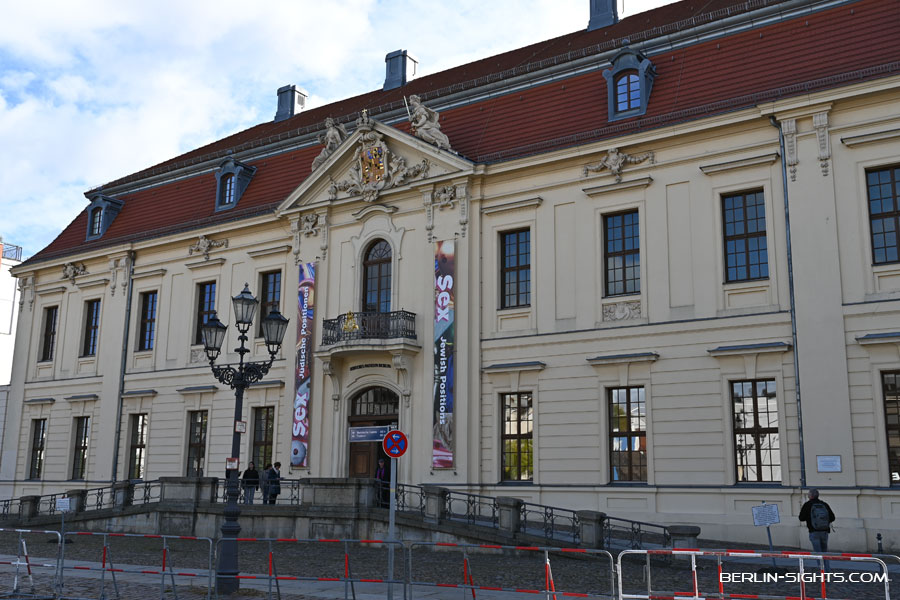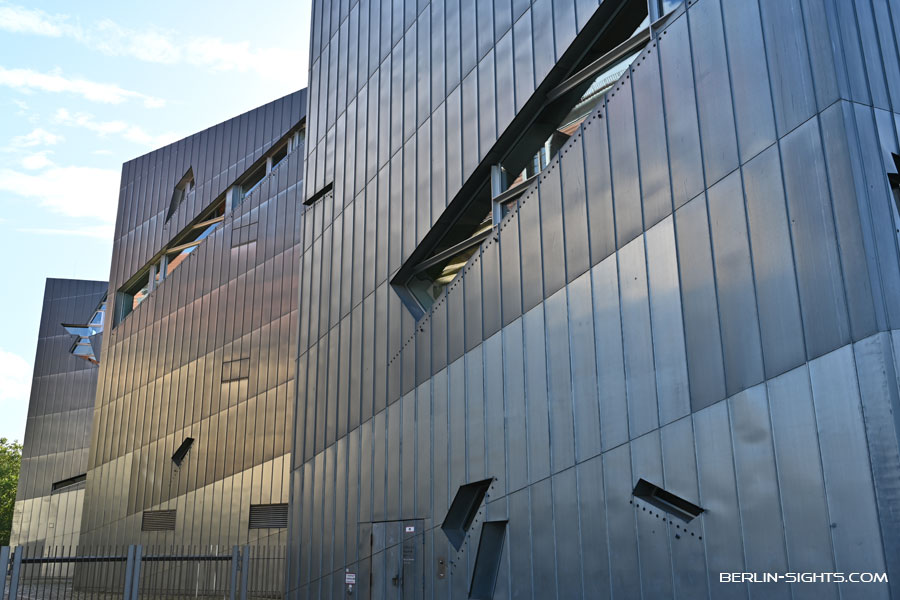
Jewish Museum Berlin
Experience the fascinating world of the Jewish Museum Berlin – a unique place for dialogue and reflection on Jewish history and present in Germany. With its permanent exhibition newly reopened in 2020, changing exhibits, and interactive programs, the Jewish Museum Berlin offers a diverse range of experiences for all age groups. Admire the impressive architecture by Daniel Libeskind and discover the W. Michael Blumenthal Academy and the children’s world ANOHA. The Jewish Museum Berlin is an essential destination for German-Jewish culture and history. Visit the Jewish Museum Berlin in the heart of Berlin-Kreuzberg and be inspired by our collection and innovative exhibitions! Tickets can be conveniently purchased online on our website.
Jewish Museum Berlin: Europe’s Largest Museum of Jewish History
The Jewish Museum Berlin is an outstanding institution in the Berlin and European museum landscape. With its newly reopened permanent exhibition in 2020, changing exhibitions, and diverse collection, the museum provides a vibrant space for dialogue and reflection on Jewish history and present in Germany. The W. Michael Blumenthal Academy and the children’s world ANOHA complement the offering with educational programs and interactive experiences for children. This diversity makes the museum a central point for German-Jewish culture and history.
Located in the Berlin district of Kreuzberg, the museum impresses not only with its diverse content but also with its distinctive architecture. The zigzag-shaped building by architect Daniel Libeskind, which translates German-Jewish history into an impressive architectural language, has become a landmark of Berlin. The museum ensemble consists of the baroque Kollegienhaus, Libeskind’s new building, and the former flower wholesale market hall, which has housed the W. Michael Blumenthal Academy since 2012.
The newly reopened permanent exhibition “Jewish History and Present in Germany” is the centerpiece of the museum. It provides a chronological overview of 1700 years of Jewish history in Germany and utilizes a variety of media, including original objects, audiovisual content, virtual reality, and interactive stations, to convey a comprehensive picture of Jewish culture and present. The museum, with its exhibitions, events, and digital offerings, targets a broad audience and emphasizes educational efforts to bring Jewish culture and history closer to an international audience.
Jewish Museum Berlin: History of the Museum
The Jewish Museum Berlin opened in 2001, but the idea for its founding dates back to before the fall of the Berlin Wall in 1989 in West Berlin. On January 24, 1933, the world’s first Jewish Museum was opened in Oranienburger Straße in Berlin-Mitte, under the direction of Karl Schwarz. This museum, which collected both historical artifacts and modern Jewish art, was closed by the Gestapo during the November pogroms of 1938, and its inventory was confiscated. Parts of this collection are now housed at the Skirball Cultural Center in Los Angeles and the Israel Museum in Jerusalem. In 1971, on the 300th anniversary of the Jewish Community of Berlin, the idea of a new foundation emerged, which eventually led to the creation of today’s museum.
The path to the opening of the modern Jewish Museum Berlin was long and controversial. Daniel Libeskind won the architecture competition for the extension of the Berlin Museum in 1989, and the foundation stone for the new building was laid in 1992. There were intense discussions about the use of the new building and the position of the Jewish department. Amnon Barzel advocated for the legal independence of the museum in 1994, a cause further pursued by W. Michael Blumenthal from 1997 onwards. On January 1, 1999, the Jewish Museum was established as an independent institution of the State of Berlin. The new building, which attracted visitors even before the official opening, was awarded the German Architecture Prize in 1999.
After the gala opening on September 9, 2001, the Jewish Museum Berlin officially opened to the public on September 13, 2001, two days later than planned due to the terrorist attacks in the United States. The original permanent exhibition, conceived under the direction of New Zealand anthropologist Kenneth C. Gorbey, was temporarily closed in 2017 and reopened in August 2020 after more than two and a half years of renovation. The new permanent exhibition “Jewish History and Present in Germany” presents the history of Jews in Germany from the Middle Ages to the present day, reflecting current research and museum standards, covering an area of 3,500 square meters.

Jewish Museum Berlin: Architecture & Construction
The Jewish Museum Berlin consists of two main buildings: the baroque old building of the Kollegienhaus and the modern new building by Daniel Libeskind in the style of deconstructivism. Both buildings are interconnected underground, while above ground, another new building serves as a group entrance and cloakroom and also provides access to the garden. In September 2007, the Glashof, a glass roof designed by Libeskind, spanning the courtyard of the baroque old building, was opened. Since the end of 2012, the opposite Academy of the Jewish Museum Berlin in the former flower wholesale market hall has complemented the ensemble.
The Libeskind building, a striking zigzag structure made of titanium zinc, is a symbol of German-Jewish history with its underground axes and slanted walls. The design “Between the Lines,” Libeskind’s first implemented design, won the competition for the extension of the Berlin Museum with the Jewish Museum department in 1989. Inside are voids, empty spaces that run through the building, conveying a sense of uncertainty or disorientation. The inspirations for the construction come from significant figures and works of Jewish and German culture.
The baroque Kollegienhaus, the last remaining baroque palace in the historic Friedrichstadt, serves as the entrance to the Jewish Museum Berlin and houses, among other things, the special exhibition areas, the museum shop, and the café. Built in 1735, the palace originally served as the seat of royal judicial administration and was rebuilt and expanded multiple times in the 19th and 20th centuries. After its destruction in World War II, it was rebuilt in the 1960s and redesigned by Daniel Libeskind in the 1990s. Today, an underground slate staircase connects the baroque old building with the Libeskind building.
Visitor Information
Address
Lindenstraße 9-14, 10969 Berlin
Opening Hours
Open daily from 10 am to 6 pm
Last admission: 5 pm
Jewish Museum Berlin: Tickets & Tours
Admission to the permanent exhibition, as well as to additional presentations in the Libeskind Building and ANOHA, the children’s world of the Jewish Museum Berlin, is free for all visitors. For temporary exhibitions in the old building, regular admission is €10 and reduced admission is €4, with free entry for children and teenagers under 18 years old. To avoid waiting times, it is recommended to book a timed ticket in advance, although some remaining tickets are also available at the box office. You can purchase online tickets here.

